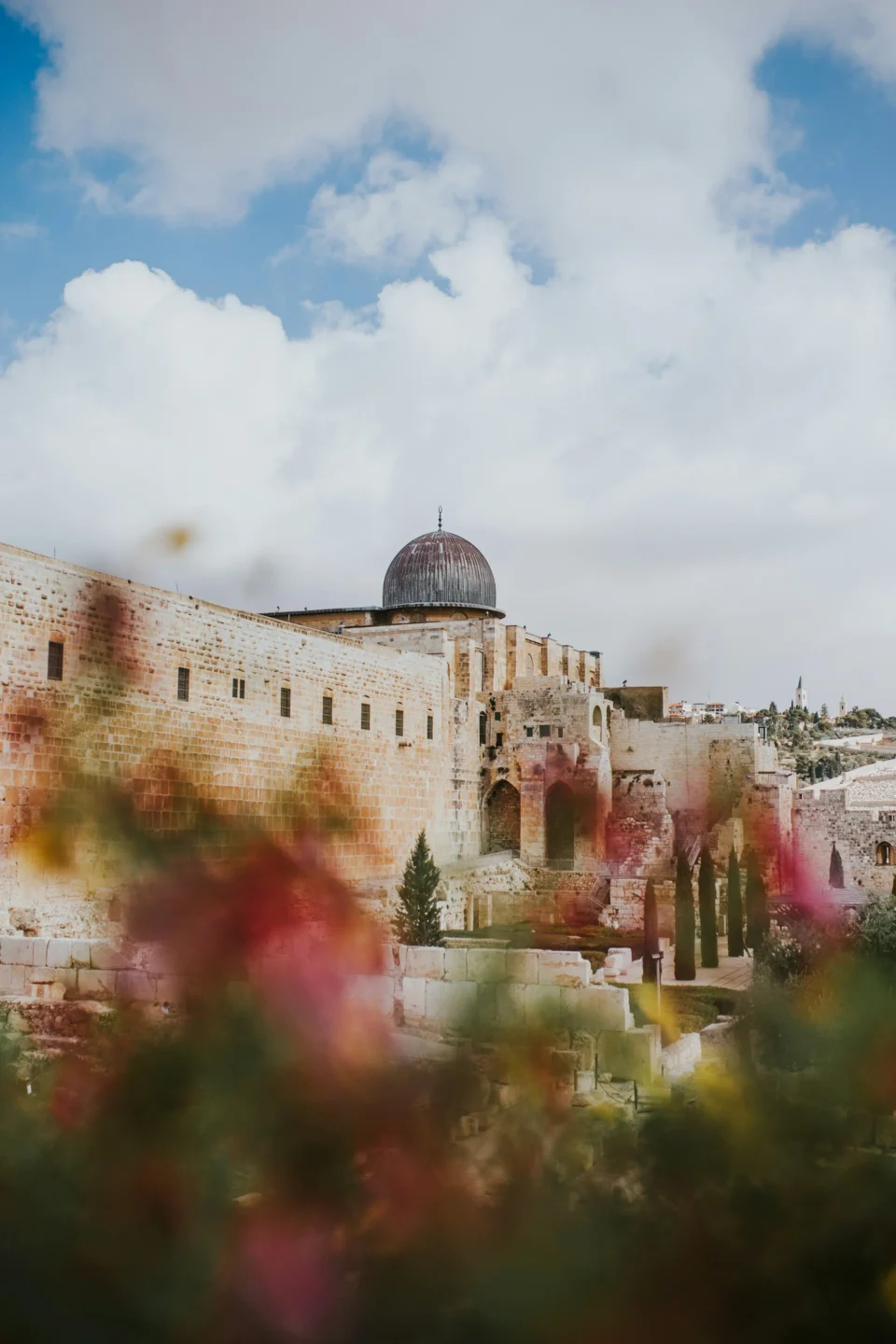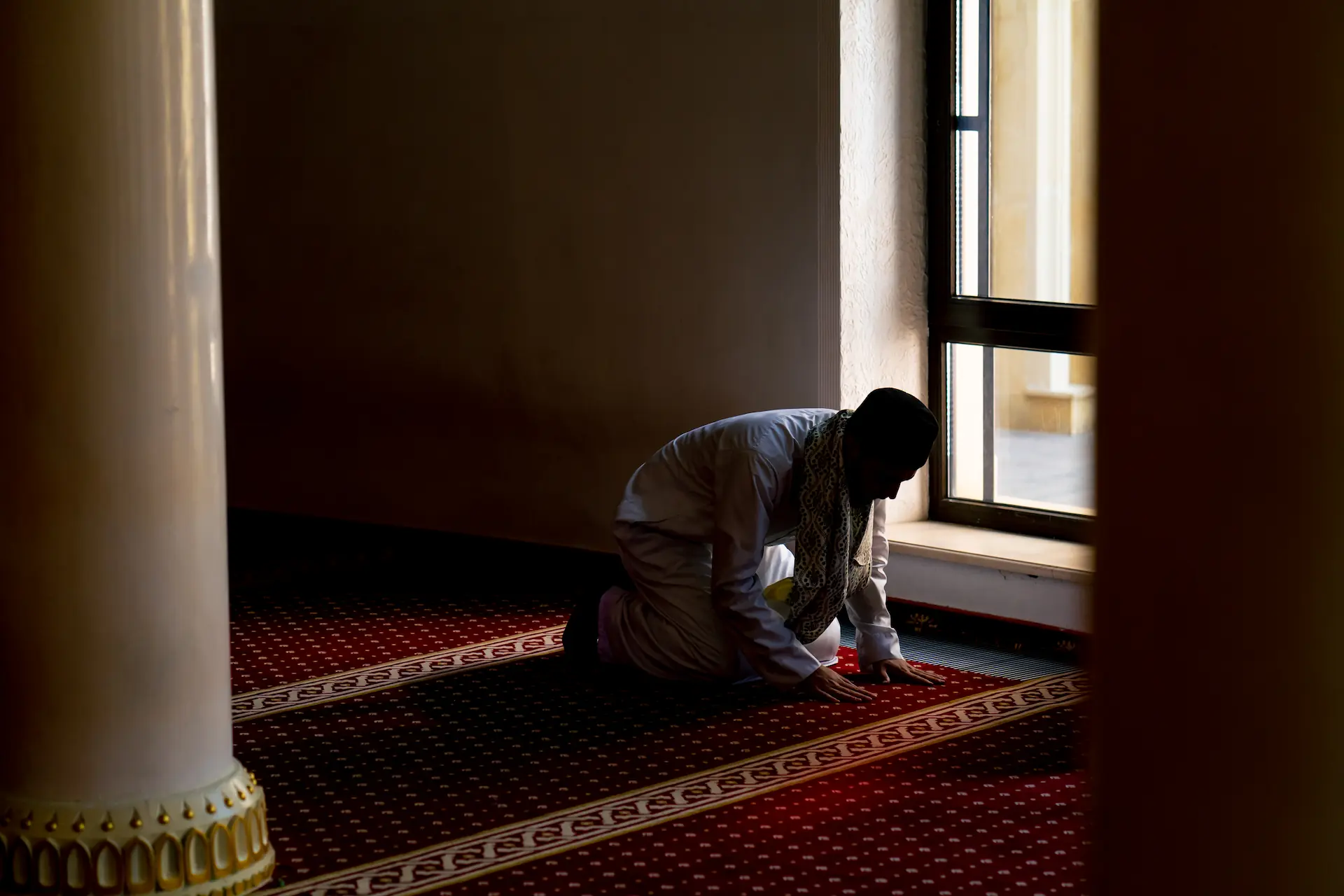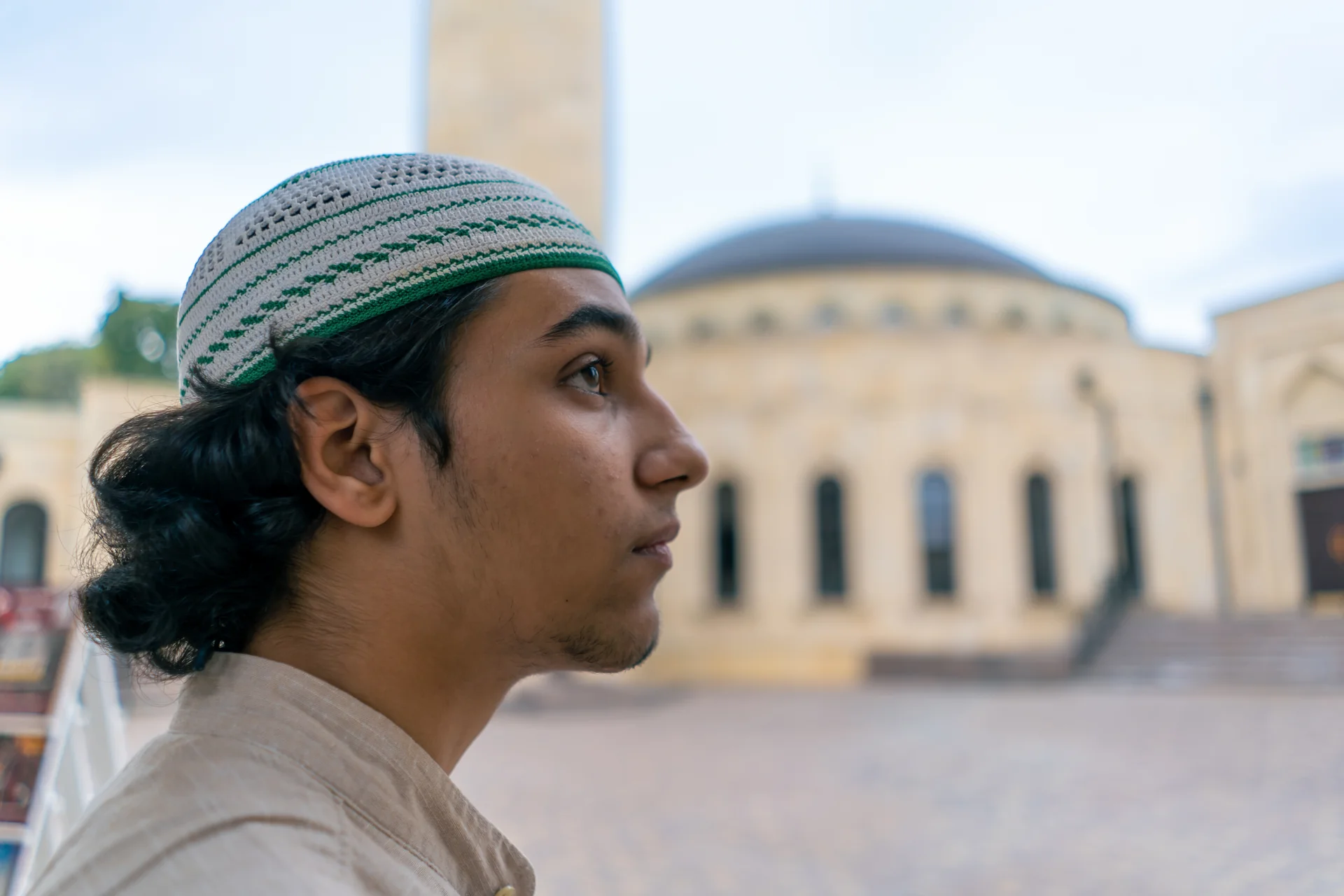Masjid Al-Aqsa holds a revered status as the third holiest site in Islam, following the Harams of Makkah and Madina. Situated within the confines of the Old City of Jerusalem, this sacred mosque is not only a physical marvel but also a spiritual focal point for Muslims worldwide. Its significance is deeply rooted in the events of the Prophet Muhammad’s Night Journey, known as Al-Isra’ wal-Mi’raj, during which he was transported from Masjid Al-Haram in Makkah to Masjid Al-Aqsa. This divine journey culminated in the Prophet’s ascension to the heavens, making Masjid Al-Aqsa a pivotal location in Islamic history and spirituality.
The History of Masjid Al Aqsa:
During the rule of either the Rashidun caliph Umar (ruled 634–644) or the Umayyad caliph Mu’awiya I (r. 661–680), a prayer house was constructed near the site of the mosque. The present-day mosque, located on the southern wall of the compound, was initially built by the fifth Umayyad caliph Abd al-Malik (r. 685–705) or his successor al-Walid I (r. 705–715), or possibly both, as a congregational mosque aligned with the Dome of the Rock. After an earthquake in 746, the mosque underwent reconstruction in 758 under the Abbasid caliph al-Mansur. Further expansions took place in 780 during the reign of Abbasid caliph al-Mahdi but suffered another devastation during the 1033 Jordan Rift Valley earthquake. It was subsequently rebuilt by the Fatimid caliph al-Zahir (r. 1021–1036). The present-day structure largely retains its 11th-century design.
Which one is Masjid Al Aqsa?

There is often confusion regarding which structure is Masjid Al-Aqsa. When you search for “Al-Aqsa Mosque,” many images depict the building with the iconic golden dome. However, it’s important to clarify that this is not the Masjid Al-Aqsa; rather, it is the “Dome of the Rock.” The Dome of the Rock is constructed atop the rock from which the Prophet Muhammad ascended during his Night Journey.

In contrast, Masjid Al-Aqsa features a distinctive silver dome. Understanding this distinction holds great significance, as Masjid Al-Aqsa is the actual mosque where Muslims gather for prayers and worship. It is not merely a matter of architectural identification but also a matter of spiritual and historical accuracy.
Why is Masjid Al Aqsa important to muslims:
سُبْحَـٰنَ ٱلَّذِىٓ أَسْرَىٰ بِعَبْدِهِۦ لَيْلًۭا مِّنَ ٱلْمَسْجِدِ ٱلْحَرَامِ إِلَى ٱلْمَسْجِدِ ٱلْأَقْصَا ٱلَّذِى بَـٰرَكْنَا حَوْلَهُۥ لِنُرِيَهُۥ مِنْ ءَايَـٰتِنَآ ۚ إِنَّهُۥ هُوَ ٱلسَّمِيعُ ٱلْبَصِيرُ ١
Exalted is He who took His Servant [i.e., Prophet Muḥammad (ﷺ)] by night from al-Masjid al-Ḥarām to al-Masjid al-Aqṣā, whose surroundings We have blessed, to show him of Our signs. Indeed, He is the Hearing, the Seeing.
Masjid Al-Aqsa holds profound significance in the hearts and minds of Muslims worldwide, bearing a rich history and spiritual legacy that transcends time. It is mentioned in verse number one of chapter 17 of the Holy Quran. This verse highlights the divine blessings bestowed upon the surroundings of Masjid Al-Aqsa, elevating its status as a blessed sanctuary where the signs of Allah’s greatness are manifested.
The Masjid Al-Aqsa compound was once the Qibla, the direction towards which Muslims prayed. Before the Kaaba in Makkah became the permanent Qibla, Muslims faced the Masjid Al-Aqsa compound in Jerusalem for their prayers. This historical connection to the early days of Islam imbues Masjid Al-Aqsa with a deep sense of reverence and importance as the initial focal point of Muslim worship.
The compound of Masjid Al-Aqsa is not only where the physical mosque stands but also the location of the miraculous Night Journey (Al-Isra’ wal-Mi’raj) of the Prophet Muhammad (ﷺ). This event solidifies the sanctity of Masjid Al-Aqsa as a place that is connected to the Prophet’s spiritual journey and divine revelations.
In essence, Masjid Al-Aqsa stands not just as a physical structure but as a symbol of unity, faith, and divine connection for Muslims. Its historical legacy, association with the Prophet’s Night Journey, and Quranic mention all contribute to its revered status as one of the holiest sites in Islam.
Masjid Al Aqsa Today:
Today, Masjid Al Aqsa stands as a site surrounded in both reverence and controversy. The masjid is heavily surrounded by Israeli security forces, creating a barrier for many Palestinians who wish to enter from the occupied West Bank to perform their prayers.
According to Al Jazeera, there are restrictions imposed by Israeli authorities that state that only men above the age of 55 and women above 50 with valid permits are permitted to enter Masjid Al Aqsa, making it effectively off-limits to the vast majority of Palestinians. Prospective visitors must obtain a special magnetic security card and a special permit directly from the Israelis. As a result, many Palestinians are deprived of the opportunity to visit Masjid Al-Aqsa due to these strict barriers imposed by Israeli restrictions.




